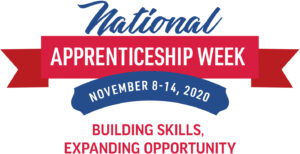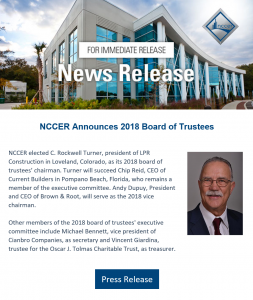
A Google search for Learning Management Systems (LMS) best practices can best be described as a vendor list of sales pitches describing technology tools that will revolutionize any training program. Use ‘our’ system and “…build your workforce’s skills, strengthen your core competencies and gain new ones…” Sounds good. Where do we sign up? Who are the top systems and vendors?
For those leading training initiatives in the Construction Industry, there are many compelling reasons to adopt and utilize an LMS. Most large construction companies have projects in many states, with a corporate office hundreds of miles away. The idea that training can be offered via t
he internet, watching a video, reading a document and taking a test, provides the scalability necessary to reach all employees. In addition, the cost of pulling necessary craft and their leadership off of a job for training is rarely built into a bid that wins the contract, although training and well trained craft/staff is often required by clients. Meeting OSHA and Department of Labor compliance expectations can easily be completed and documented in an LMS system.

However, many construction companies struggle with the reality and costs of choosing and implementing a Learning Management System. Often purchased to meet a singular need, an LMS can be likened to buying a smart phone and using it to make nothing but phone calls. The capabilities are endless but many are often never utilized. And if an LMS is purchased to just avoid providing training that pulls needed site staff off a job to train, the problems that arise as a result are numerous and often without solutions.
What then should be considered in choosing and implementing an LMS that makes sense to support the varied needs of a construction company and the needs of the industry?
- An LMS is a tool in the construction training plan, not ‘the plan’. Although a good LMS can provide several options in training design, storage and delivery, it is only ‘one tool’ in the training tool belt. Abandoning live training, one-on-one training, workshops, mentorships, site craft group training and other training strategies that meet the needs of all learners only replaces the challenges of funding these initiatives with what becomes the ‘limited’ capabilities of a comprehensive LMS.
- Understand the needs of the organization before looking for/choosing an LMS. Learning Management vendors impress us with all the ‘bells and whistles’ that their tools can provide, with promises to meet the needs of our specific companies. Before looking at any tool, including an LMS, identify the training objectives, gaps, current and future delivery options and the budget available for training. Create questions for the vendor on how an LMS will support the specific needs identified.
- Realize that an LMS implementation is a marathon not a sprint AND plan for it! The best implementations require socializing new ideas, soft and hard launches for the multiple training initiatives, pilots under review and room to change directions when necessary. Building training plans in terms of immediate initiatives (year 1) and future initiatives (year 3 and 5) prevent us from doing too much at once and not doing it well. All organizations have people who will easily accept change and adopt new ideas, people that will comply because they believe in the company and their work, and those that will most likely never do what is asked of them. Planning for and addressing each of those groups ensures a smooth and productive implementation, especially for an industry that prides itself in doing things the way they have always been done…because it has worked before.
- Identify the learning audiences, their available tools and interest/abilities to utilize an LMS. The construction industry employs a variety of people and sends them to sites that can be remote and with limited access to wi-fi. Craft laborers, apprentices and journeymen are rarely provided laptops needed for training and attempt doing hours of LMS work on smart phones and ill-equipped pads. Many times course materials are only offered in English when many of our site employees are non-English speakers, with more of them unable to read materials created in English. For those of them that have access to proper hardware and internet, the school-based training design of an LMS is often not how construction workers learn best. The very fact that ironworkers and pipefitters become tradesmen is because they prefer to work and learn through experience and not out of a book. When training teams and organizations understand this, they can choose, create and implement LMS designs that meet these needs and provide support when needed.
LPR has successfully utilized an LMS for a number of years to provide content to our apprentices as they learn the trades in both our steel and industrial divisions. Recently we added new members to our training team which required us to step back and review how we utilize our tool for its current purpose and how we might move beyond what we do today. In addition to committing to a full time administrator of the LMS, we are currently looking at growth in one, three and five year plans. We also brought in a training consultant from our vendor who provided a ‘level-set’ for the team on the back-end design, how we are currently using the tool from the vendor’s perspective and what we can do in the future to engage our ‘site to corporate’ employees in both training and the LMS. This has been a great experience, allowing us as a training community to better utilize a tool we have committed to using with a workforce we are committed to serving.
I have often said that recruiting, interviewing and hiring employees is much like dating a few times and getting married. This is often necessary due to the pressures of staffing our jobs, meeting project start dates and contract requirements, and pressures to not lose great candidates to competitors. Purchasing an LMS can also be like ‘dating’, but without time pressures to make a decision. Talking to several vendors, companies that use those vendors and reviewing the LMS capabilities that meet the very specific needs of construction workers will ultimately result in a good relationship and a strong LMS for your organization.






No comment yet, add your voice below!